ThereminGoat
Jul 19, 2023
•8 minutes
Keyboard Switch Leaves Explained
This short blog post talks about keyboard switch leaves and the significant role they play in determining a switch's tactility and general feel when in use.
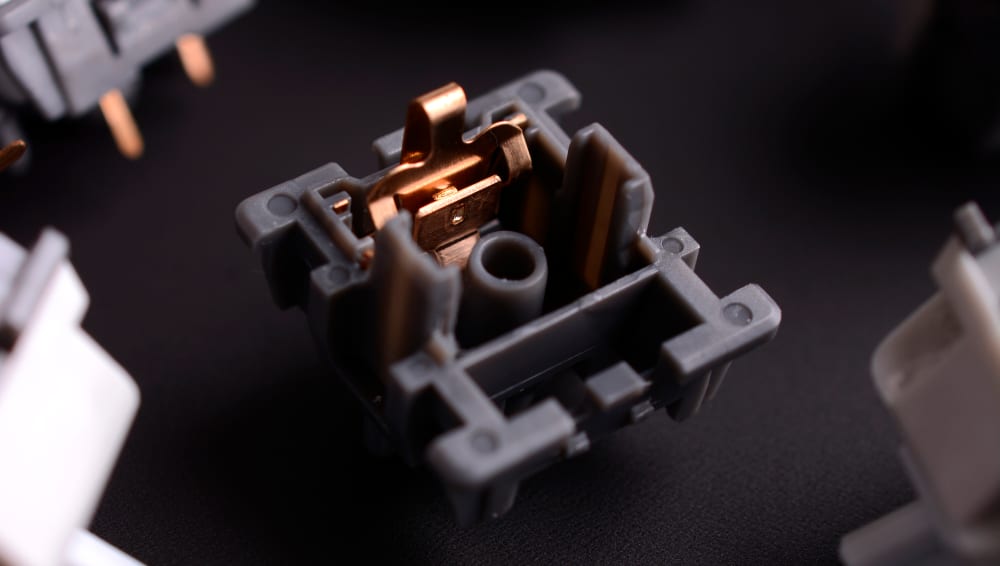

Kinetic Labs Husky Linear Switch Bottom
Outemu full cream switches (blue, red, tan/brown):
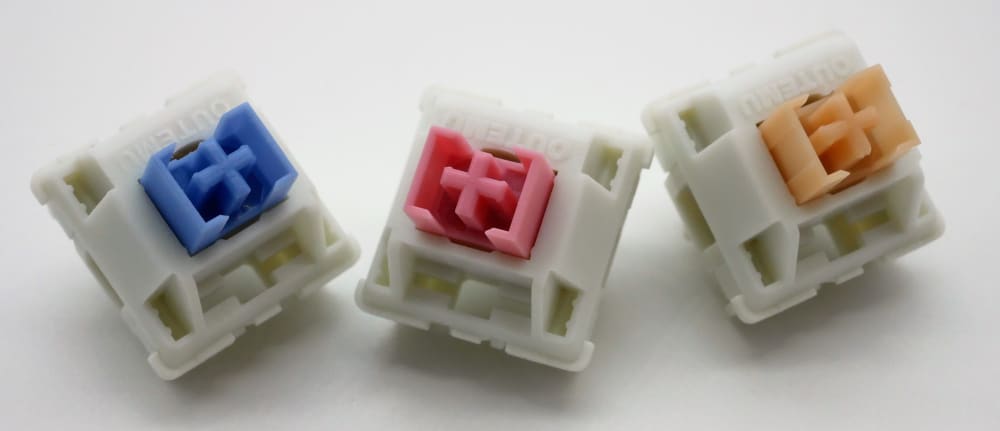

Outemu Full Cream Switches
Upon first glance, what would you guess are the biggest differences between these three Outemu Full Cream switches? If you first pointed to the differences in stem color and assumed that these had something to do with each switch being a different type, that would absolutely be correct. Here the Red stemmed switch is a linear, the Blue is a clicky, and the Tan/Brown colored stem is that of a (silent) tactile as goes the historical color convention.
But what if I told you that there were mechanical differences between each of these that ran deeper than just their color and type? No, I’m not talking about the slightest differences in spring weights, manufacturing batches, or any of the other super nerdy switch details that you normally see me hyper-fixating on – the difference to be recognized here is in the leaves.
Modern, MX-style mechanical keyboard switches have largely operated on the same principle that was first established by Cherry in the 1980’s with their original MX-style switches. Push the stem of any given switch in and at some point between the resting position and the bottoming out, the key will complete some sort of internal circuit that registers a keypress and outputs whatever the character is to the computer screen. For an exaggerated example, let’s all go ahead and press the ‘A’ key on our keyboard together just to re-familiarize ourselves with the process.
Slowly now, we don’t want to overdo it and miss the marvel of engineering at work. How this mechanism actually occurs, though, is because of an interaction between the stem legs – the tiny points on the front side that slant outward away from the body of the stem – and a switch’s leaves. In the resting position, the stem legs force apart the large and small leaves causing there to be an open circuit. Upon pressing the stem into the switch, the gap caused by the stem legs begins to narrow until the large and small leaf connect, complete a circuit with the keyboard, and register a keystroke. An example of what leaves look like outside of a switch as well as what this actual mechanism looks like in action may be found below.
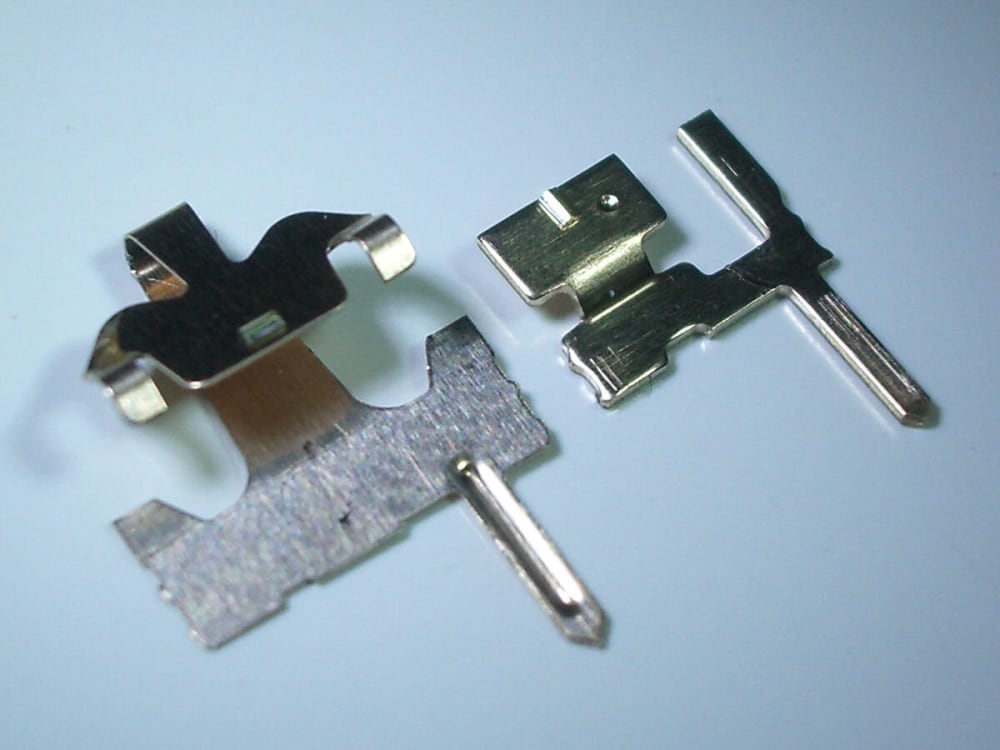

Barebones Switch Leaves
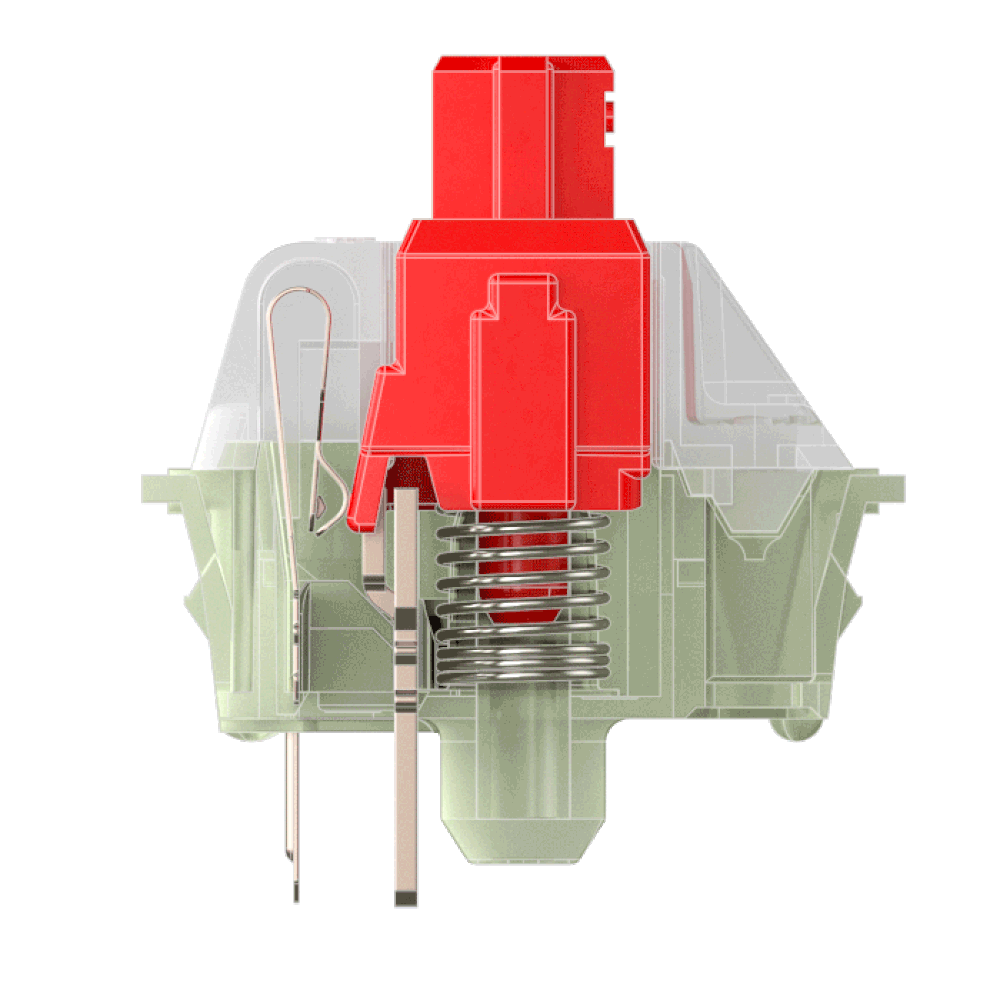

Example of Switch Leaf Mechanism
While the gif above is easy enough to understand on its own, many people don’t recognize all of the hidden complexities lying just beneath the surface of the leaves themselves. While stem length, housing material, and switch type have all been beaten to the death at the hobbyist level, very little efforts have been taken to understand or classify the differences between MX-style stem leaves. Due to their complex, tightly fit structure which is extremely flimsy and not really able to be removed without nearly impossible degrees of delicacy, leaves largely are glossed over as uncontrollable features of a switch bottom housing that are just kind of there and need to be dealt with.
However, the angle to which the top portion of the large leaf is bent away from the smaller leaf, the size of the bump on that part of the leaf, and even the physical separation between large and small leaves all play a significant role in determining how a switch feels. In the event that you think I’m making this all up, let’s go ahead and step a few hundred words back to the beginning of the article with our trio of Outemu Full Cream switches. After taking the stem and spring out of the silent tactile switch and placing it into just the housings of the clicky and linear switches, we can see a huge difference in their tactile force curves which have to be a function purely of the leaves of linear, clicky, and tactile switch bottom housings.
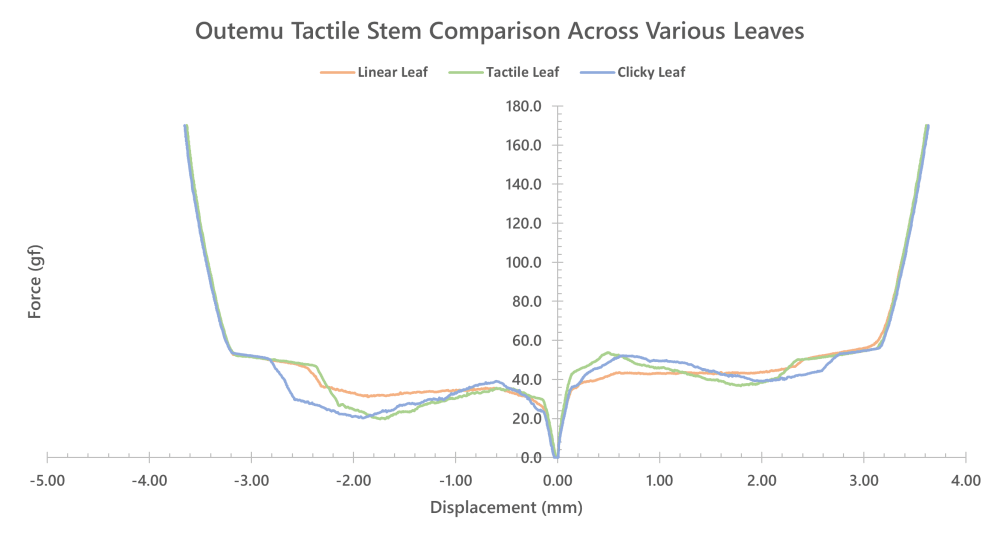

Switch Leaf Force Curve Graph
To more seasoned frankenswitching experts, the results of the force curve comparison above are hardly surprising. Again, while stressing that very little definitive documentation has ever been done comparing different types of switch leaves, this is far from the only example of this difference being noticeable that I’ve heard in my time. For one, there’s been a long-standing rumor that leaves in Cherry MX Blues and MX Blacks have different leaves in a very similar fashion as to what is shown above.
Much more recent and prevalent to today’s enthusiasts, it has been shown in several switch modification servers that Durock/JWK has used at least two different tactile leaves throughout their production history. Even swapping the stems between two different tactile switches from the same brand and era could produce two different tactile feelings! To think that these are the only differences in modern, MX-style switch leaves that exists out there would be asinine. Just below you can already see that some manufacturers are beginning to implement physical differences to leaves with slits in the upper bend of some large leaves and entirely different, silvery materials used in others.
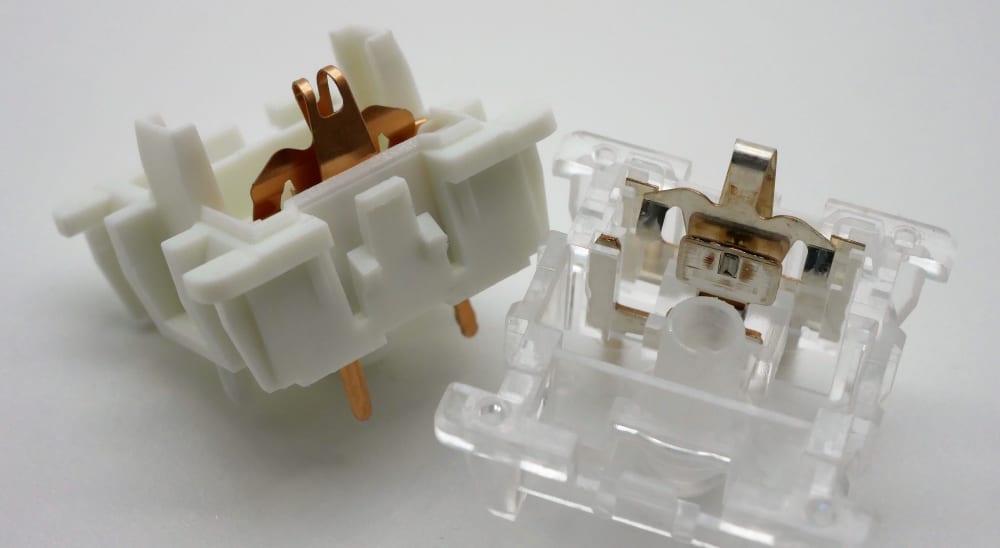

New Switch Leaf Examples
Ultimately, I have no prescription or really even any strong words of advice to provide to you all when it comes to differences among mechanical keyboard switch leaves that I’ve noted here in this brief article. Rather than providing historical background, an interesting comparison, or even sage advice, I kind of wanted to write this out just to inform a larger audience of a really subtle, sneaky detail that I feel like too many people miss in their switches.
Hell, I’d even be willing to bet that there are some people out there who have accidentally crossed tactile stems into linear switch bottom housings or vice versa when making their frankenswitches while not even remotely considering that this could be affecting the final performance of their switches. So perhaps next time you sit down to open up and lube some switches or are harvesting bits and pieces from some for your next endgame frankenswitch, take a minute to admire the complexity and details of your switch leaves. I have a feeling there’s a lot more potential for innovation in the MX-switch footprint left in these two thin pieces of metal than people realize...